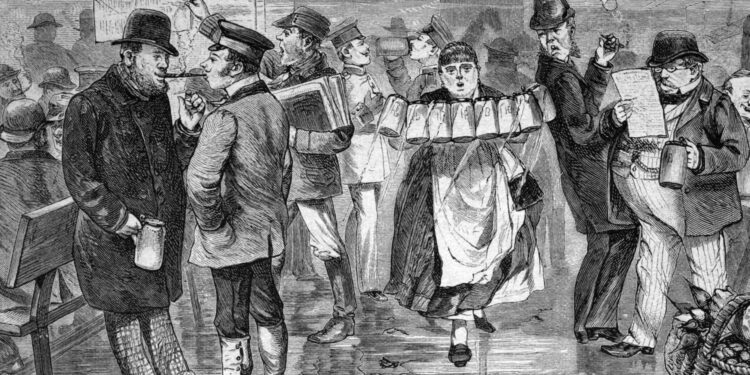German bureaucracy also played its part in tale uncovered by yeast scientists
Baron von Degenberg could not have a son. Duke Maximilian I of Bavaria could not keep his brewery clean.
From those two accidents, a new scientific paper contends, came one momentous outcome: lager.
Historians and geneticists have come together to trace the history of the world’s most successful beer, and the yeast that produces it. Although they cannot be certain, in doing so they believe they have tracked down the single moment when the future of brewing was born, tracing it to Hofbräuhaus in Munich — and a jealous aristocrat.
Not all yeasts are the same. Some ferment at the top of the barrel, some at the bottom. Some like warmth, some are happy in cold cellars.
Lager yeast, we know, comes from a hybridisation of two — a bottom-dwelling, cold-tolerant yeast called Saccharomyces eubayanus and a top-fermenting one called Saccharomyces cerevisiae. When they come together, it is in a yeast that makes the crisp, not sweet, cold-brewed beer that has conquered the world.
But how did this happen? That’s what Professor John Morrissey, a microbiologist from University College Cork, set out to establish, along with German colleagues.
A key insight, he said, was that it would have to be a very rare event. Back then, brewing was local. “The distance a wagon could cover to deliver beer and return within a day was 20 kilometres,” writes Morrissey in a paper in the journal FEMS Yeast Research.
“Only exceptional beers were traded over long distances, mostly by sea or river transport. Beers that travelled overland were a sensation and even then, and only with a few exceptions, not more than 200km. Thus for an encounter of two exceptional yeasts . . . special conditions must be met.”

Duke Maximilian I of Bavaria requisitioned a licence to brew wheat beer when a rival aristocrat died
From genetics, we can tell that the two yeasts must have come together in about the 17th century. That is as far as a laboratory can help, though.
Luckily, Germans take beer extremely seriously. Not only do they have strict rules about what counts as acceptable ingredients, they keep detailed records about when and how those rules change. By scouring these records, Morrissey believes they have found ground zero of lager.
In the 16th century in Bavaria, top-fermentation was banned, to protect the region’s bottom-brewing heritage. The problem was, top-fermented produce, namely wheat beer, was extremely popular.
To undermine the imported market, a dispensation was granted. In 1548, the von Degenberg family was granted a wheat-brewing licence. For half a century, Duke Maximilian I watched, jealous, as the popularity of its wheat beer rose. Then, when the baron died without an heir, he swooped — requisitioning the property, the licence and the beer.
For the first time, under one roof, he brewed two beers, with two different yeasts. And he alternated batches.
“The records of the Hofbräuhaus show that for five years, pretty much every batch went from bottom-fermented to top-fermented,” said Morrissey. “That led to inadvertent cross-contamination. Somewhere along the way, the yeast hybridised. The hybridised beer was superior — and so ended up getting maintained.”
From later records, the researchers can trace the movement of the Hofbräuhaus, which still brews today — yeast to Spatenbräu brewery, which had a brewing school. From across Germany, brewers came to learn about this new lager brewing — the word “lager” comes from the German “Lagerbier,” meaning “beer brewed for keeping”. Its fame spread. One, J C Jacobsen, came on horseback from Copenhagen. He returned with a tin full of yeast, to introduce to his Carlsberg brewery.

Queen Elizabeth II visits the Carlsberg brewery in 1957
Morrissey said the story was an odd demonstration of the serendipity of history. “All these nobility, they wanted sons and to continue the line and have a legacy.”
The same must have been true of von Degenberg. “But because he failed, his yeast gave birth to a new yeast. If you want a legacy, the legacy of lager yeast is far bigger than the legacy his son would have had.”
Source: The Times


Recent Comments